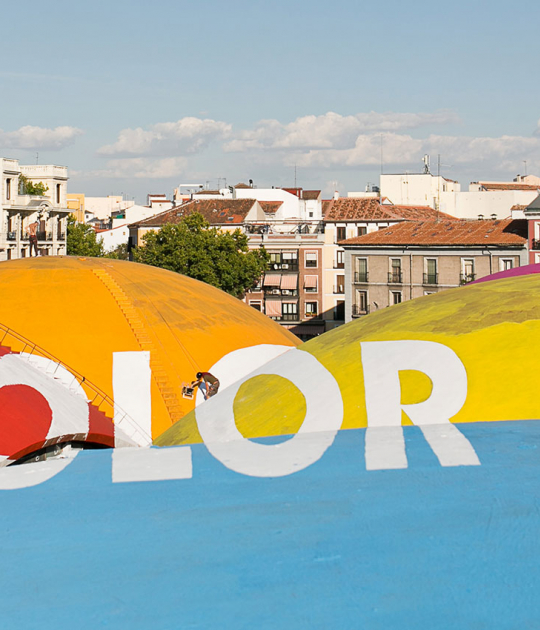“We are honored to be working with Yayoi Kusama, an artist Philip Johnson both admired and collected. This exhibition playfully engages the entire site, creating a celebratory mood for Philip Johnson’s 110th birthday and the 10th year since the opening of this museum,”
Irene Shum, Curator and Collections Manager at the Glass House.
Narcissus Garden, comprising 1,300 floating steel spheres, each approximately 12 inches in diameter (30 cm) will be installed in the Lower Meadow and forest, creating a dramatic view to the west of the Glass House. Drifting in the newly restored pond, the spheres will move with the wind and follow the pond’s natural currents, forming a kinetic sculpture. Their mirrored surfaces will reflect the surrounding Pond Pavilion (1962), wooded landscape, and sky.
The Glass House will also install Kusama’s recently created enormous steel PUMPKIN (2015). The placement of PUMPKIN will be on the hillside meadow, east-northeast of the Brick House (1949), on a concrete sculpture footing where Ellsworth Kelly’s Curve II (1973) was once installed. “The first time I saw a pumpkin was in a farm in elementary school. In Japanese, a ‘pumpkin head’ is an ignorant man or a pudgy woman, but for me, I am charmed by its shape, form, and lack of pretension.” says the artist.
Dots Obsession – Alive, Seeking for Eternal Hope will be a special installation for a limited time, September 1 through 26, where Kusama will create an “infinity room” experience with the Glass House itself covered with polka dots. Visitors who attend the exhibition during this period will be offered the unique experience to simultaneously see the world through the eyes of both Philip Johnson and Yayoi Kusama. The Glass House’s window walls and doors allow the artist to create a one-of-a-kind signature “infinity room.” The polka dots directly engage the architecture of the Glass House, complementing its structure and aesthetics, breathing new life into the house. For Kusama, the polka dot represents an individual, its own universe. Similarly, Philip Johnson created his own private universe at the Glass House, sculpting every aspect of landscape experience into his own universe.
“My desire is to measure and to make order of the infinite, unbounded universe from my own position within it, with polka dots. – In exploring this, the single dot is my own life, and I am a single particle amongst billions. – I work with the principal themes of infinity, self-image, and compulsive repetition in objects and forms, such as the steel spheres of Narcissus Garden and the mirrored walls I have created.”
Versions of the sculpture have been included in traveling museum solo exhibitions as well as important international group exhibitions, including the Asia Pacific Triennial of Contemporary Art at the Queensland Art Gallery, Gallery of Modern Art, Brisbane (2002); Whitney Biennial in Central Park, New York (2004); and Louvre’s Sculpture Programme for FIAC in the Jardin des Tuileries, Paris (2010); among others. The work has also been exhibited in institutions and historic residences, such as the Burle Marx Education and Cultural Center at the Instituto Inhotim, Minas Gerais, Brazil (2009) and the Chatsworth House, Derbyshire, England (2009).



































